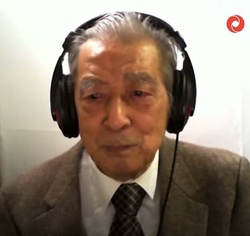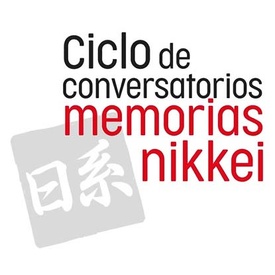
He was just a child, but he remembers it as if he were a witness again. From a window on the second floor of his house in Lima, Víctor Makino watched criminals break into businesses and homes of Japanese families to steal their belongings.
It was in May 1940, more than 80 years ago, but he still preserves precise memories, such as the surnames of some victims, his neighbors: the Onagas, owners of a bazaar, and the Tsuboyamas, owners of a recently opened fabric store.
Victor Makino, now an octogenarian, also saw the thieves taking the seats from a Japanese hair salon.
The criminals acted with impunity. The police did not intervene, they let them destroy at will.
The Makino family had a hardware store on the first floor, below their house. Luckily, he was not damaged thanks to some Peruvian neighbors who came to his defense.
The world was shaken by World War II, and although Peru did not participate in it, some of its residents suffered its impact, among them Japanese immigrants and their descendants, targets of the Peruvian government, an ally of the United States.
We members of the Nikkei community know about the looting of 1940, probably the peak of the rapacity against the Japanese in Peru, from stories from relatives or books.
However, in general the stories are not first-hand testimonies, but borrowed memories from Nisei who were not born or were very young that day, and who preserve a narrative transmitted by their parents.
For this reason, testimonies like those of Víctor Makino, exceptional due to their scarcity in the face of the inexorable advance of time, are so valuable and one of the privileges that comes with being part of the research team of the series of conversations “Nikkei Memories”, organized by the Association Peruvian Japanese to compile experiences about the history of Japanese immigration to Peru.
HISTORY SPEAKS TO YOU
When the story has a face and voice, a name and emotions on the surface, it captures you in a way that print or hard data sometimes cannot. When the coronavirus pandemic is history, Peruvians will remember with horror that more than 200 thousand countrymen died from the plague. However, more than the horrifying figure, we will be hurt by the personal suffering due to the death of a loved one, the agony due to the lack of oxygen or hospital beds. What hurts, hits or moves is the concrete drama, not the statistical abstraction.
This, saving the distance, is what I feel when the story comes to me expressed in the personal experiences of the people interviewed for the conversations. It is a great learning.
Not all of them are textbook stories, the kind that are narrated with notarial precision and that produce newspaper headlines (such as looting). There are also stories that belong to the sphere of private relationships, that are lived rather than told, that go under the radar of the texts that only cover the big facts.
For example, the rivalry or tension between immigrants from the “big island” and Okinawans. Honestly, I had never paid attention to that. I grew up believing that all Nikkei in Peru were of Okinawan origin. When I grew up I found out that it wasn't like that, but I thought that having ancestors from one prefecture or another didn't make any difference, Nikkei is Nikkei. That's why I didn't give importance to that matter, it belonged to a time that wasn't mine, it was a backwardness that didn't concern me.
However, listening to journalist Alfredo Kato say that his father, an immigrant from Fukushima Prefecture, railed against Okinawans and detested them to the point of forbidding his children to associate with a neighboring family from Okinawa, made me realize which was not a minor issue in the history of Japanese immigration.
A sad reality that, fortunately, began to be reversed in the same people who harbor prejudices. Alfredo Kato recalled that when his sister fell in love with a Nisei of Okinawan ancestors, he was able to persuade his father not to put obstacles in his daughter's marriage to the Uchinanchu, making him understand that times were changing.

As in the previous case, a fact or a subject gains in impact, in brilliance, when the enunciation (the friction between two groups of an ethnic collective) becomes flesh (two Japanese families separated by discrimination). In moments like this, you feel that the story is speaking to you.
AGAINST IGNORANCE

The more you learn, the greater the awareness of your ignorance. I think that's good because it encourages you to continue learning. In the case of “Nikkei Memories”, the ignorance I am referring to (mine) is not so much about ignorance of events (that too) but rather about mentalities, attitudes, idiosyncrasies, experiences, etc., of a generation, the nisei, previous to which I belong.
When you're young, you're trigger-happy. You don't think much, you don't inform yourself enough, and you shoot. The nuances disappear, the context does not exist. The sentences are hammer blows. There is no room for ambiguity or doubt. And the target of your criticism is usually older people, from previous generations, because they are conservative or outdated, because when you are young you think you are inventing the world.
You do not recognize the works or the inherited moral heritage because you take them for granted, like the Sun in summer, ignoring that they were built by your ancestors, that where there was nothing they built a heritage and an infrastructure from which you benefit even if you have not contributed. In nothing.
To give an example, when I was a boy I went to the La Unión Stadium Association (AELU) to play soccer and have fun in the pool. If I had been born 20, 25 years earlier, when the club did not yet exist, I would have had to play in the street or a park. And if he had been born some 40 years earlier, he would perhaps have been a pre-war Nisei who could not practice sports in large public spaces, from where he was expelled with xenophobic shouts. And he would probably have witnessed the effort of Japanese immigrants to build a sports field for their children, then children or young people.
The above does not mean, of course, subscribing with semicolons everything they say, but it helps you understand (which implies, for example, framing things in their context, nothing happens in the air), it teaches you to relativize your judgments or opinions, to empathize, to position yourself as part of a group. Even disagreeing on several issues (such as the idealization of the image of the Nikkei community), I can understand their points of view.
I don't know if it is said much in other countries, but in Peru the expression “ignorance is daring” is often used. I know this from my own experience. Thanks to “Nikkei Memories”, ignorance is learning to be less daring.
© 2021 Enrique Higa Sakuda





